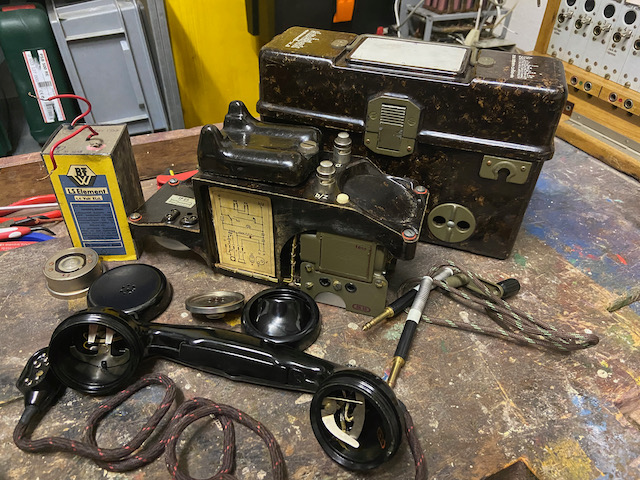
The Czechoslovakian field telephone TP 25 is an improved design inspired by the German FF33. It is also made of bakelite (case and body) and a keep it simple design for LB only use and it is much smaller and lighter than the FF33. In my view the cleanest and most practical and also sturdy design of the FF33 "copies". It was probably developed in the early fifties and seems to have been produced until at least the mid seventies. Its abundance on the surplus market hints to quite high production numbers.
I own two of these which apparently are made more than 20 years apart but with nearly zero differences. One is made in 1952, the other one in 1975. The 1975 one has a capacitor block where the common contact is already combined inside the block. Only three outside contacts for the two included capacitors, whereas the 1952 capacitor block has four external contacts for the two included capacitors. Also the 1975 one came with an included battery adaptor for a D-cell size battery.
Disassembled instrument from 1952.

Disassembled instrument from 1975.
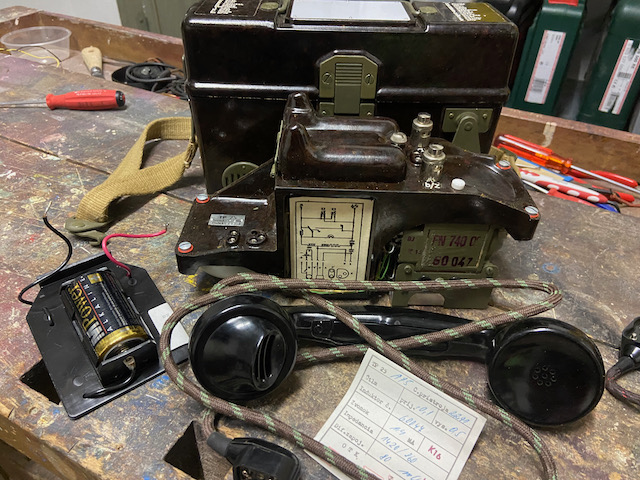
Ready to use.
Patchcord plugged in.
Generator handle mounted.
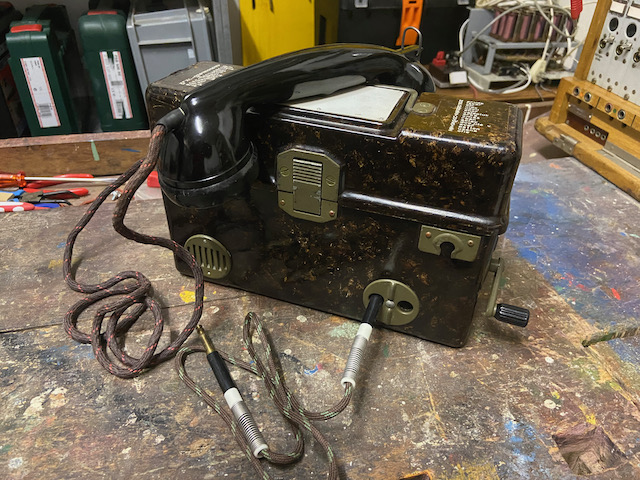
Electrical diagram (1952 and 1975 are identical).
The coil provides for an anti-sidetone setup.
The handset provides a non switched TX contact not used on this instrument.
It can be assumed that the handset could be used on some other instrument where the P.T.T. button would not be used, bu I do not know if such instrument exists.
A plug for an optional headset is provided and connected in parallel to the handset RX circuit.
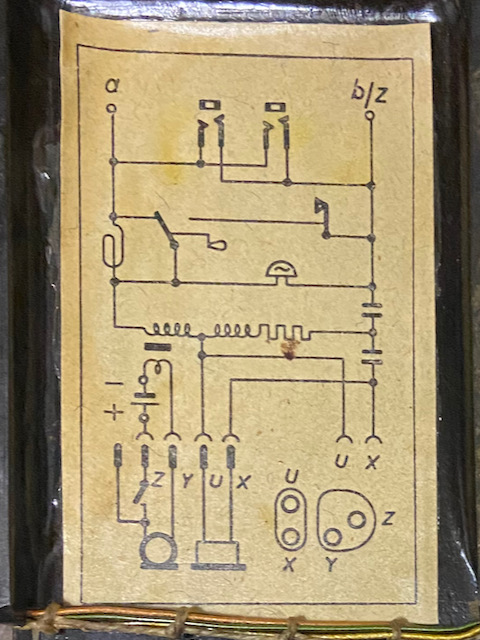
The body bottom (1952).
The ringer is mounted on the left side of the battery compartment, everything else (generator, capacitor, coil) on the right side.
A very clever and space optimised design.

The handset (1952).
Form and setup virtually identical to a German FF33 handset.
The handset also provides spacers to prevent that the P.T.T. lever is activated when placing the handset over the instrument.
On the plug we can see that there are 5 prongs, whereas the socket on the instrument only provides 4 active prongs (see also description of diagram above).

The empty box (1952).
"Pozor, Nepritel Nasloucha" means "Beware, enemy is listening".
The diagram is identical to the one glued to the inside body.
The rubber seals allow to pass the cables and still close the top.
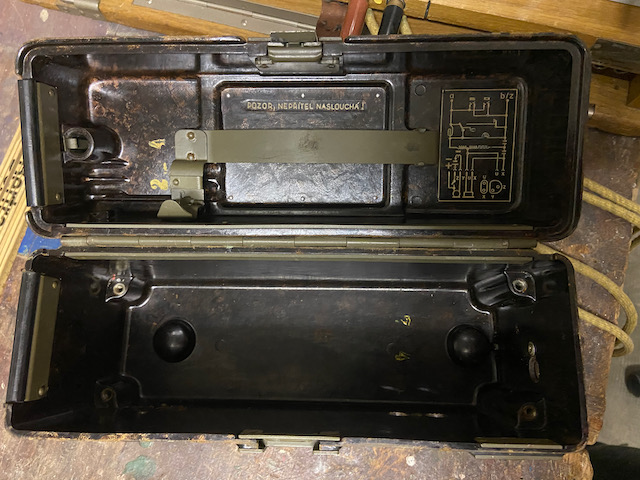
All stored (1952).
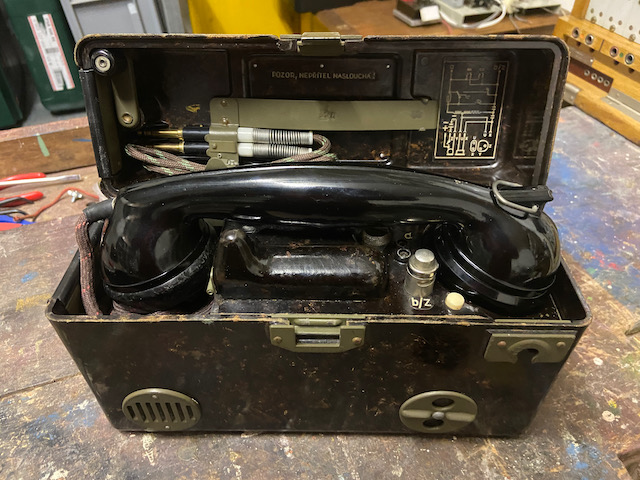
Ready for transport (1952).
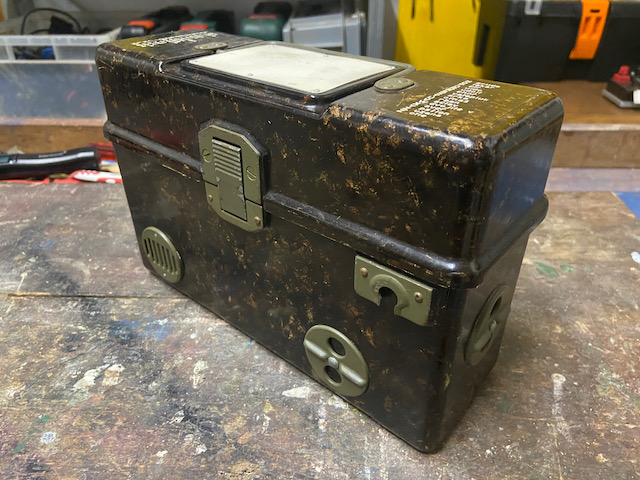
Spelling alphabet on top lid (1952 and 1975 identical).
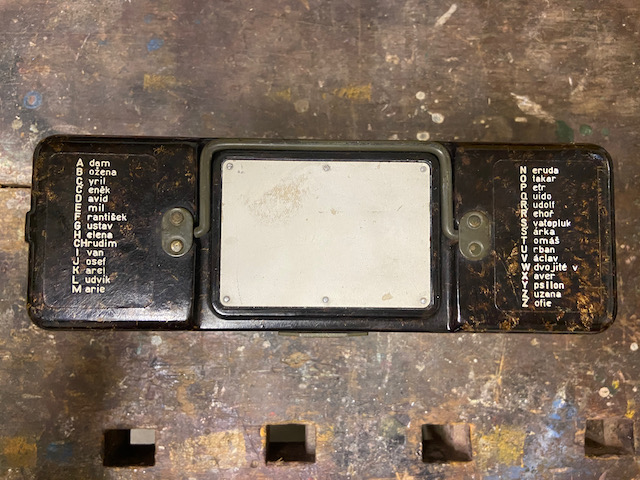
All stored (1975).
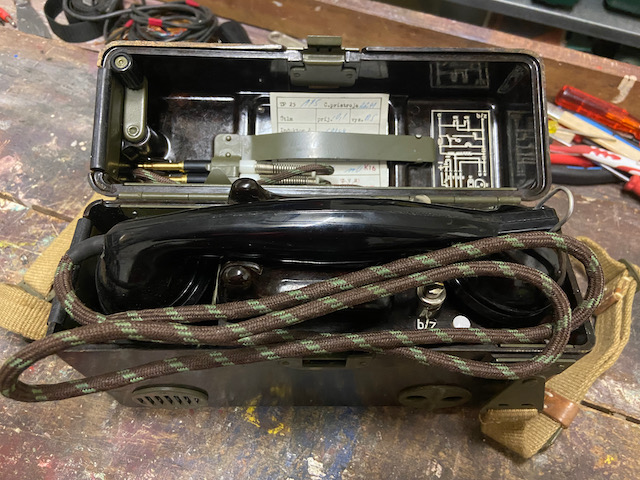
Testreport of 1975 model.
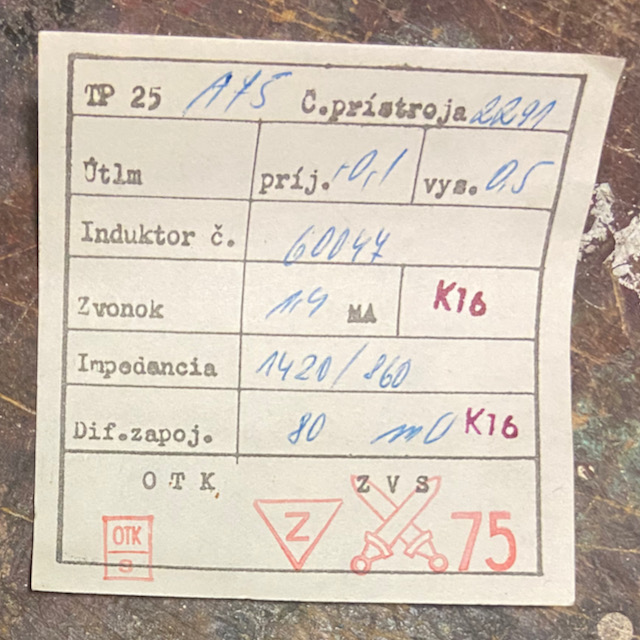
Battery adapter for D-cell (1975 model).

Creative Commons Attribution-ShareAlike 4.0 International License